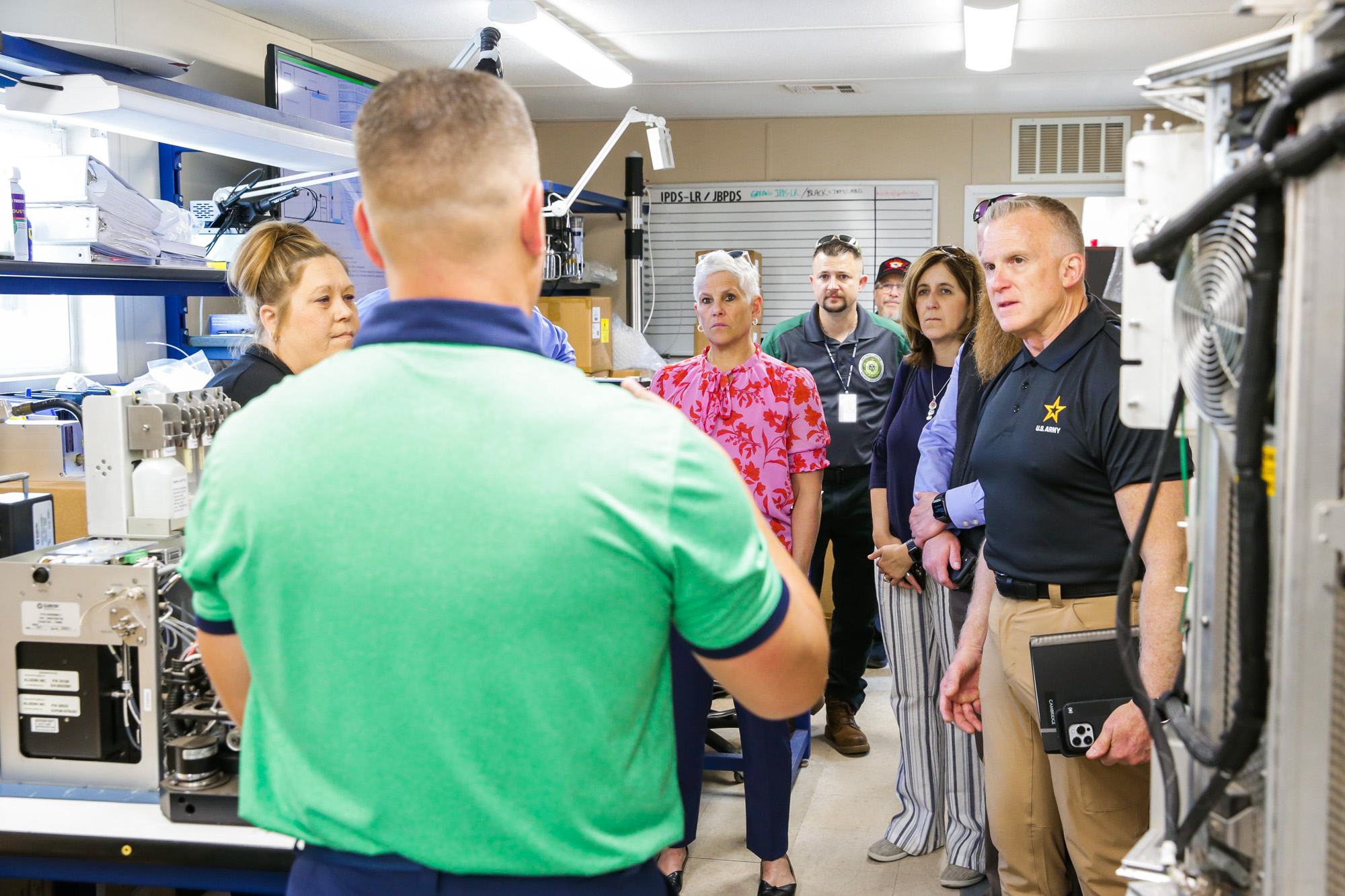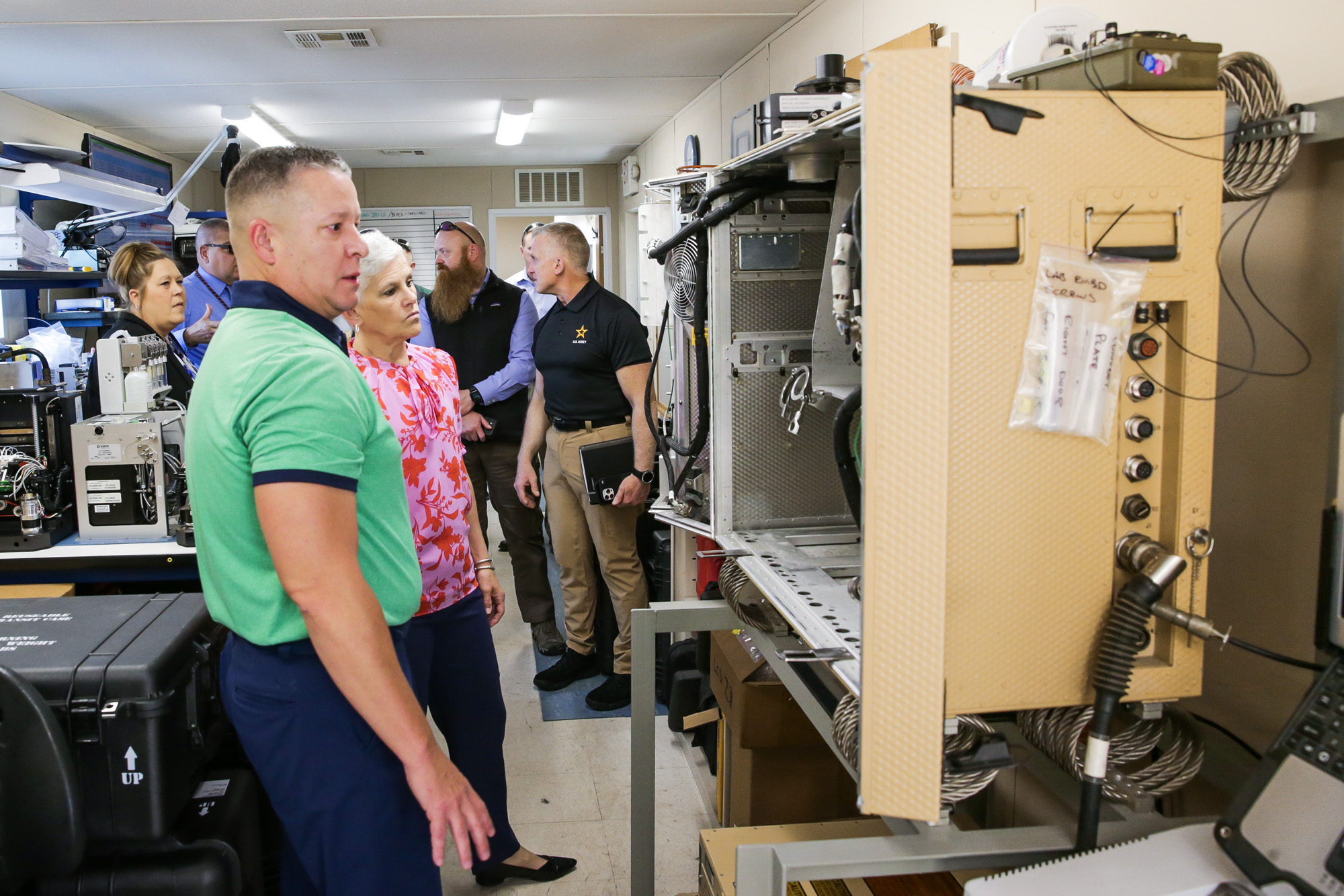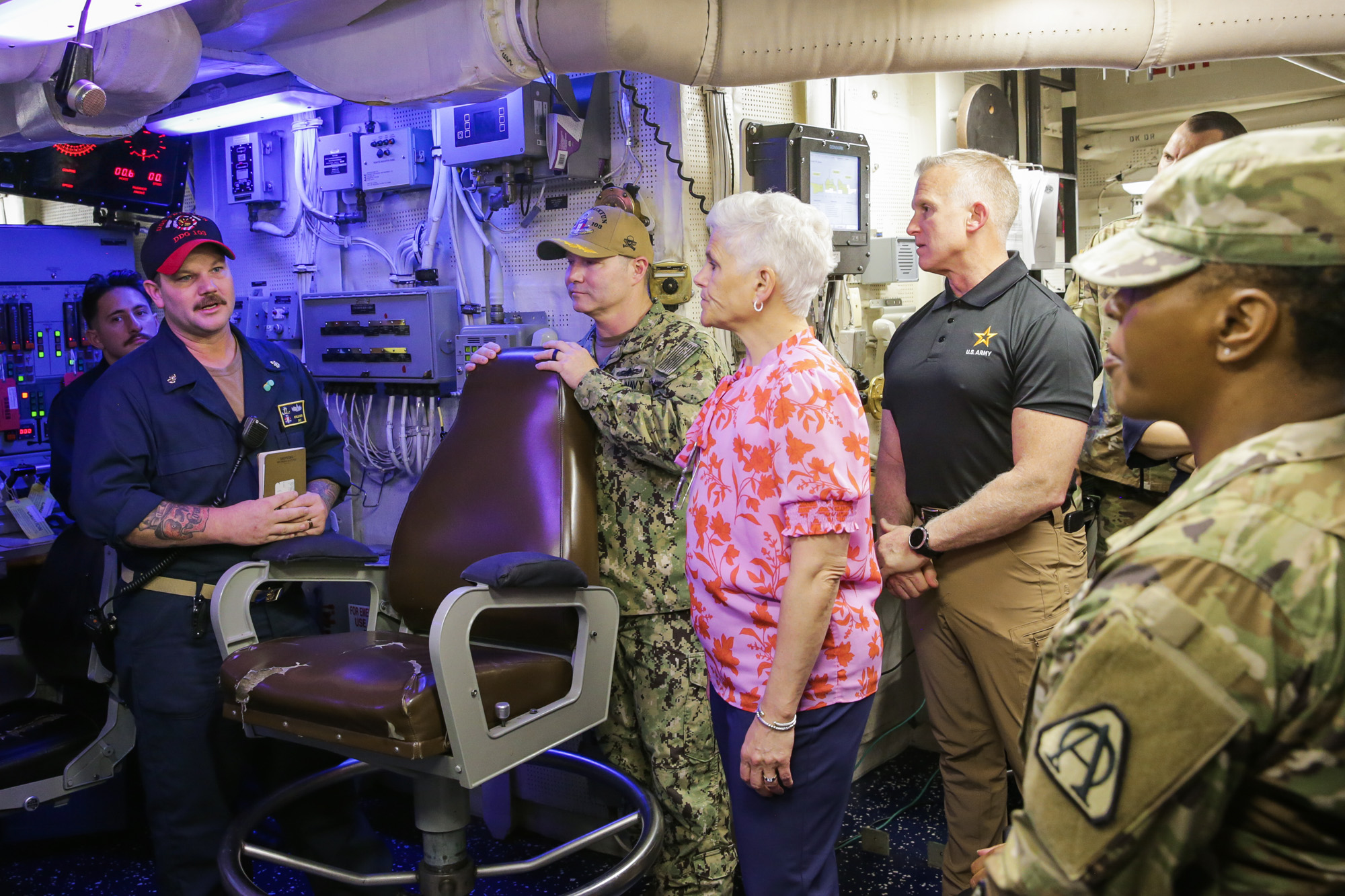Norfolk Naval Station, VA –
Currently, if a Sailor needs to test for biological agent aboard a ship, they use a variety of biosensors to detect the agent and collect a sample for follow-on and confirmatory analysis. This process not only takes time and attention away from the mission at hand but could also mean that a Sailor comes into physical contact with the bio agent, which can be dangerous work for our warfighters. The Joint Program Executive Office for Chemical, Biological, Radiological and Nuclear Defense (JPEO-CBRND) attended the 16 June fielding and demonstration for the Enhanced Maritime Biological Detection (EMBD), a new automated biological detection system that improves bioagent sampling and identification to advance warfighter safety.
The EMBD system demonstration took place on the USS Truxtun at Norfolk Naval Station. HON Deborah Rosenblum, Assistant Secretary of Defense for Nuclear, Chemical, and Biological Defense Programs (ASD(NCB)), Mr. Ian Watson, DASD(CBD), Mr. Darryl Colvin, JPEO and Ms. Nicole Kilgore, Deputy JPEO, were among the senior leaders in attendance. Additionally, leaders from the Office of the Chief of Naval Operations - Anti-Terrorism Force Protection-CBRN Branch, Naval Sea Systems Command’s CBRN Division and Naval Surface Warfare Center’s Indian Head Division were also present.
 Figure 2 – Mr. Mark Brown, Senior Project Manager for the Enhanced Maritime Biological Detection (EMBD) System of the Chemical, Biological and Radiological Defense Division at NSWC Indian Head explains the system acceptance procedures to the HON Deborah Rosenblum, ASD CBDP, Mr. Darryl Colvin, JPEO-CBRND and Ms. Nicole Kilgore Deputy JPEO-CBRND.
Figure 2 – Mr. Mark Brown, Senior Project Manager for the Enhanced Maritime Biological Detection (EMBD) System of the Chemical, Biological and Radiological Defense Division at NSWC Indian Head explains the system acceptance procedures to the HON Deborah Rosenblum, ASD CBDP, Mr. Darryl Colvin, JPEO-CBRND and Ms. Nicole Kilgore Deputy JPEO-CBRND.
The EMBD is a next generation biological detection capability fielded to the United States Navy. The system harnesses the latest innovation in biological detection by integrating CBRN sensor sub-systems into a single container. The EMBD collects, detects, and identifies potential biological warfare agents. The EMBD uses a local user interface to process and automate sampling, detection, identification and warning in one system and can identify the bioagent in a sample, which is an important advancement for this type of biosensor and a game changer for Sailors.
The EMBD system operationally and technically modifies the Navy’s existing automated biological detection system and improves the speed and specificity of biological agent detection. The state-of-the art capability improves Sailors’ confidence in warning, identification and reporting for biological agents, and also reduces life-cycle costs of the Navy’s biological detection systems.
 Figure 3 - Mr. Mark Brown, Senior Project Manager for the Enhanced Maritime Biological Detection (EMBD) System of the Chemical, Biological and Radiological Defense Division at NSWC Indian Head explains the EMBD system to the HON Deborah Rosenblum, ASD(NCB).
Figure 3 - Mr. Mark Brown, Senior Project Manager for the Enhanced Maritime Biological Detection (EMBD) System of the Chemical, Biological and Radiological Defense Division at NSWC Indian Head explains the EMBD system to the HON Deborah Rosenblum, ASD(NCB).
Earlier this year the EMBD program completed an important acquisition milestone, meeting initial operational capability when the team installed the 16th EMBD system on an Independence-class littoral Navy ship. Since then, the team deployed eight more systems and will continue to field the capability to protect our Navy vessels. The EMBD program is projected to achieve its full operational capability in FY28.
 Figure 4 – Mr. Willie Lovelace, N96 ATFP-CBRNE Branch Head with the Office of the Chief of Naval Operations (OPNAV) discusses the EMBD system operations with Mr. Ian Watson, DASD(CBD) and the other distinguished visitors during the tour of the USS Truxtun.
Figure 4 – Mr. Willie Lovelace, N96 ATFP-CBRNE Branch Head with the Office of the Chief of Naval Operations (OPNAV) discusses the EMBD system operations with Mr. Ian Watson, DASD(CBD) and the other distinguished visitors during the tour of the USS Truxtun.
Furthermore, this program demonstrates the teamwork between all levels of the Chemical and Biological Defense Program (CBDP) as the ASD and DASD for Chemical and Biological Defense (CBD) coordinate bio-detection policy and requirements for the joint force. Their goal is to ensure CBD needs are met with the latest in science and technology from DTRA JSTO and then the JPEO-CBRND is charged with the advanced development components of this acquisition and life cycle management process. Meanwhile, the US Navy and its subcommands help weigh in on how next generation CBRN solutions need to be adapted or modified to fit into their existing and changing CBRN defense needs for their fleet.
 Figure 5 – HON Deborah Rosenblum, ASD(NCB) and Mr. Darryl Colvin, JPEO-CBRND discuss the EMBD system with sailors onboard USS Truxtun.
Figure 5 – HON Deborah Rosenblum, ASD(NCB) and Mr. Darryl Colvin, JPEO-CBRND discuss the EMBD system with sailors onboard USS Truxtun.
This fielding event allowed CBDP leadership an opportunity to see JPEO-CBRND capabilities in the hands of our Navy stakeholders and demonstrated the importance of collaboration. The EMBD is an example of using tailored acquisition efforts to deliver a capability incrementally, meanwhile rapidly increasing the operational readiness against biological threats for the US Navy fleet.